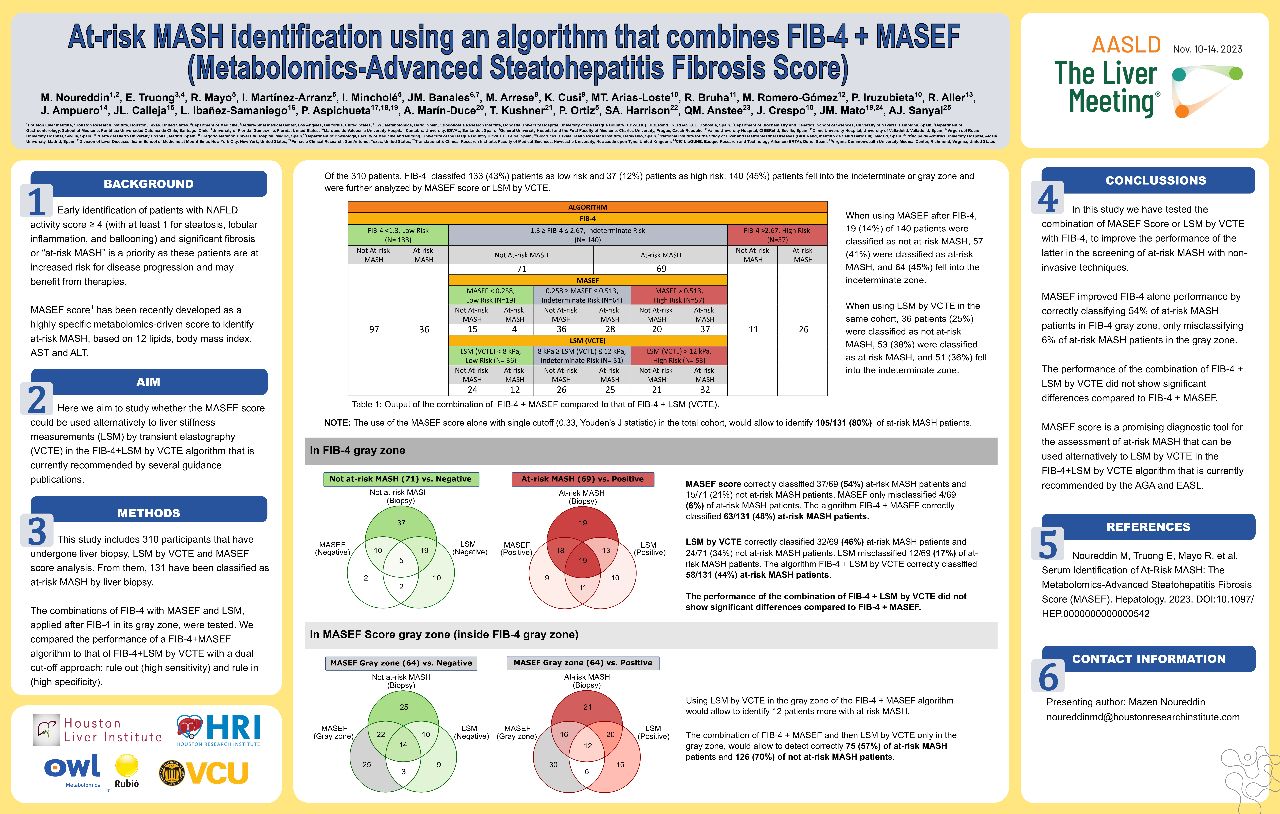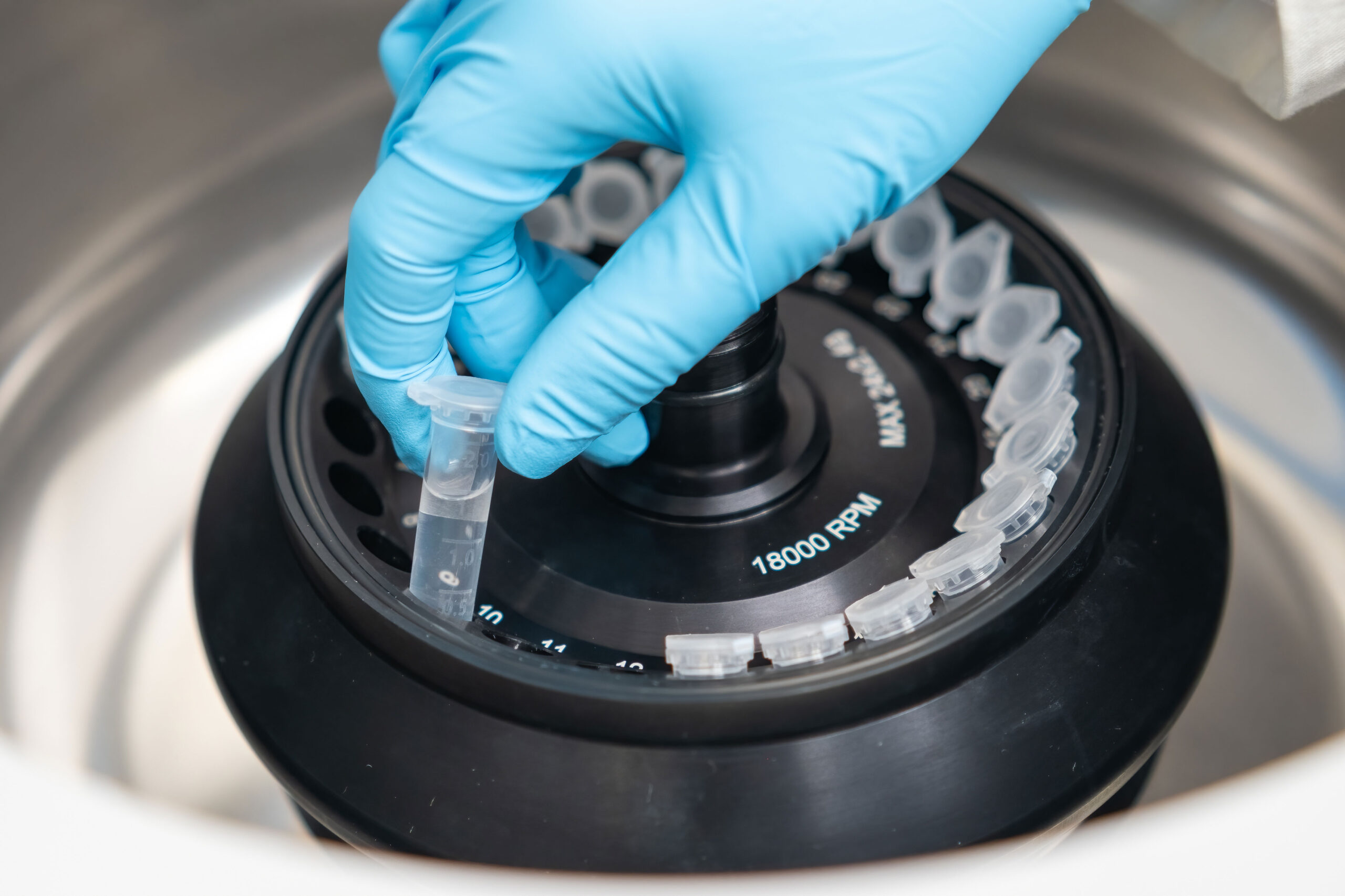News
Unlocking Liver Health: The MASEF Score Revolution at The Liver Meeting 2023
The MASEF Score, presented at The Liver Meeting 2023 in Boston, is a cutting-edge tool designed for identifying at-risk MASH (Metabolomics-Advanced Steatohepatitis) with high precision. In this article, we delve into the MASEF Score poster that OWL Metabolomics showcased, examining its potential to change how we approach liver health diagnostics.

The Rise of MASEF Score in Liver Health Diagnostics
Early detection and accurate diagnosis of liver diseases such as MASH are crucial for effective treatment. The MASEF Score, a novel diagnostic tool developed by OWL Metabolomics, is proving to be a game-changer.
Understanding the MASEF Score: A Leap Forward in Noninvasive Diagnostics
What exactly is the MASEF Score? It’s a highly specific, metabolomics-driven score that enhances the detection of at-risk MASH.
What is the MASEF Score?
It utilizes a combination of biomarkers in an algorithm to provide a clear assessment, aiming to improve upon traditional methods like FIB-4 with liver stiffness measurements by vibration-controlled transient elastography (LSM by VCTE).
The Study: A Dual Approach with FIB-4 + MASEF
A study involving 310 samples compared the efficiency of the MASEF Score against the established FIB-4 + LSM by VCTE algorithm that is currently recommended by several guidance publications.
Impressive Results: MASEF’s Diagnostic Accuracy
The results were compelling, with the MASEF Score accurately classifying 54% of at-risk MASH patients within the FIB-4 grey zone, indicating a significant improvement over FIB-4 alone. Only 6% of at-risk MASH patients were misclassified when using the MASEF score in the grey zone of FIB-4, against 12% of patients wrongly classified using LSM by VCTE.
Why Does the MASEF Score Matter for At-Risk MASH Patients?
The MASEF Score stands out for its ability to provide a nuanced assessment of liver health risks, crucial for patients who may not present clear symptoms. It offers a promising alternative in the FIB-4 grey zone, where other methods may not be as effective or as accessible
Embracing MASEF: The Future of Liver Health Screening
The adoption of the MASEF Score could signify a new era in noninvasive liver diagnostics, providing patients with earlier interventions and personalized care plans.
The MASEF Score represents a significant advancement in the fight against liver diseases. Its introduction at The Liver Meeting 2023 heralds a new direction in noninvasive diagnostics, potentially improving outcomes for countless individuals.
Background and Methods of the MASEF Score
Early identification of patients with MASH, NAFLD activity score ≥ 4 and significant fibrosis (≥F2), or “at-risk MASH,” is a priority. The MASEF score was developed using a large patient cohort from international tertiary centres, incorporating 12 lipids, BMI, AST, and ALT to improve accuracy.
Detailed Study Findings
The diagnostic performance of the MASEF score in the derivation and validation cohorts was noteworthy. With an area under the receiver-operating characteristic curve of 0.76 in the derivation cohort and 0.79 in the validation cohort, it demonstrated significant accuracy. It was compared with the FibroScan-AST (FAST) score and the combination of FIB-4 + LSM by VCTE.
The Promising Future of MASEF
MASEF has emerged as a promising diagnostic tool for at-risk MASH assessment, offering an alternative to LSM by VCTE in the algorithm that is currently recommended by several guidance publications. Its adoption could revolutionize liver health screening
The MASEF Score represents a significant advancement in the fight against liver diseases. Its introduction at The Liver Meeting 2023 heralds a new direction in noninvasive diagnostics, potentially improving outcomes for countless individuals.
To learn more about the MASEF Score and how it’s shaping the future of liver health, visit the detailed blog post on OWL Metabolomics’ Scientific and Commercial Participation at The Liver Meeting 2023.






